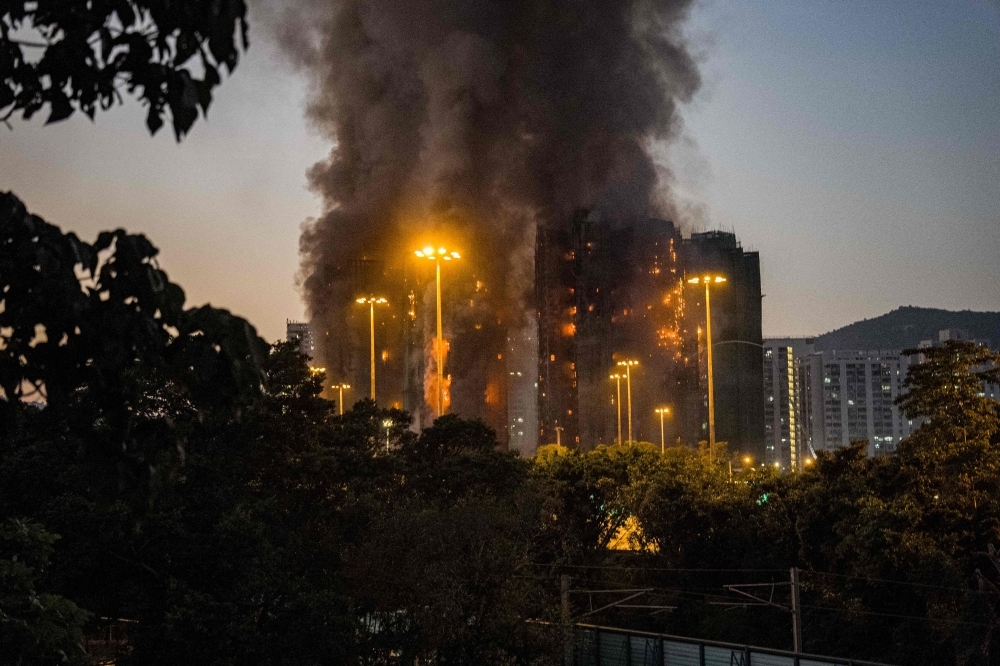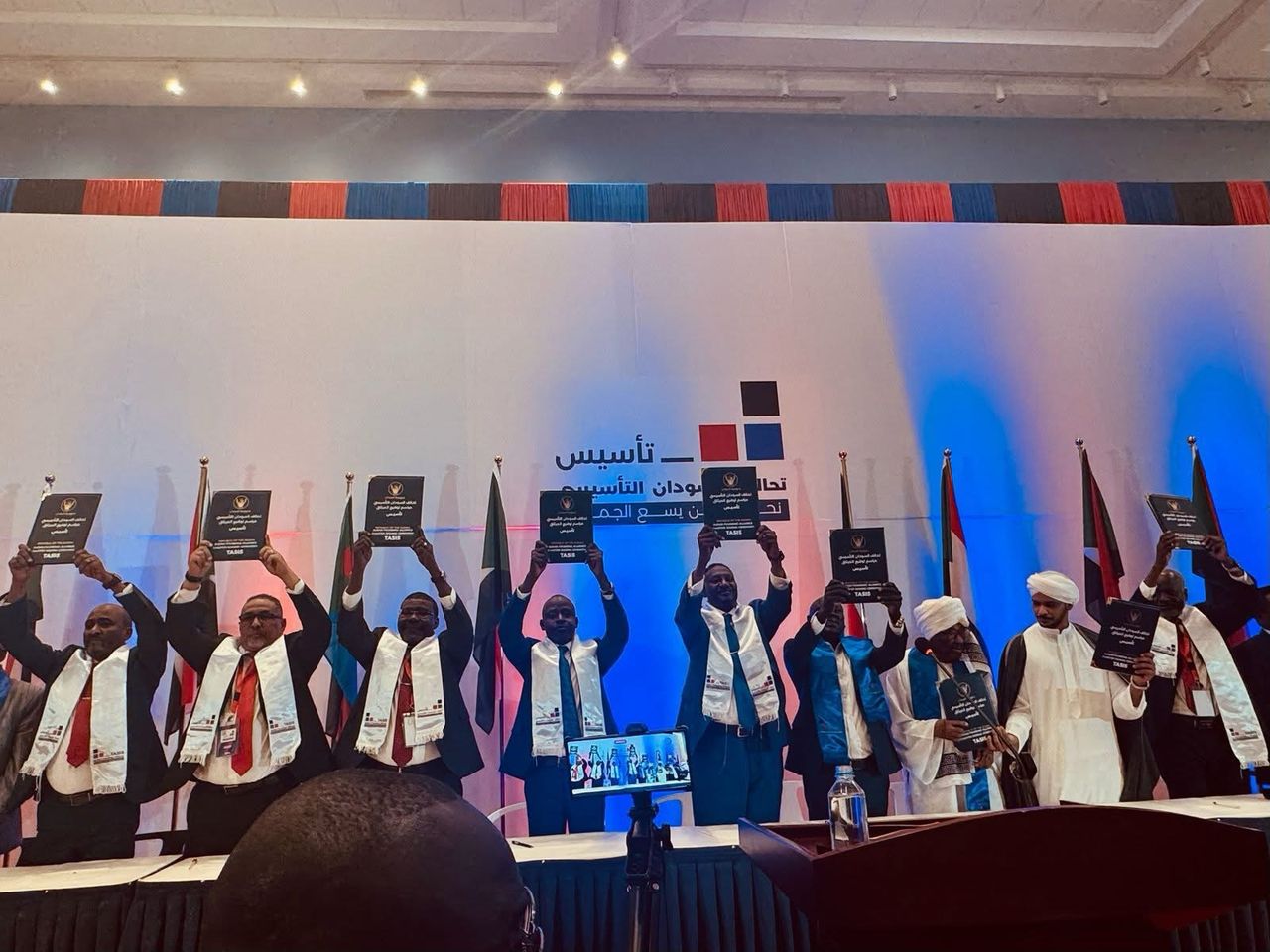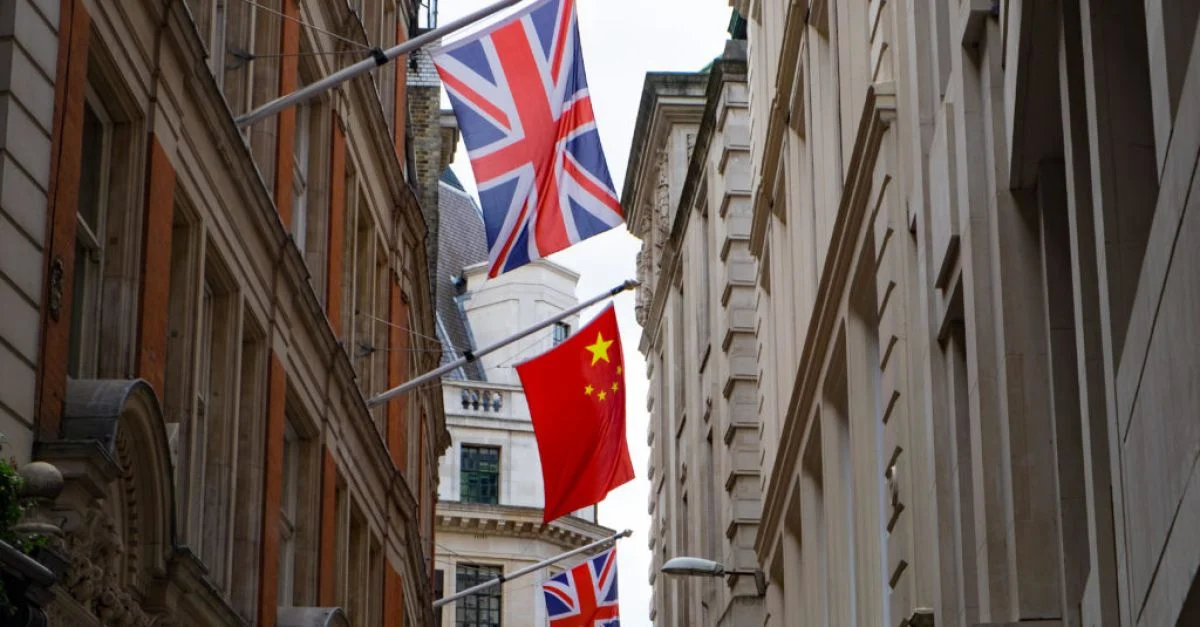By The Weekly Vision Foreign Affairs Desk
At least 44 people have died in a devastating fire that swept through several high-rise residential towers in Hong Kong’s Tai Po district on Wednesday, in what officials describe as one of the city’s worst fires in nearly two decades.
Authorities say 279 residents remain unaccounted for, with fears that many were trapped inside the burning buildings. More than 760 firefighters were deployed to battle the blaze, as huge flames and dense grey smoke billowed from the Wang Fuk Court housing complex, casting a dark plume across the skyline.
Local media reports that three men have been arrested on suspicion of manslaughter as investigations into the cause of the disaster continue. The blaze broke out at 14:51 local time (06:51 GMT) at the Wang Fuk Court estate and was upgraded to a level five fire, the highest alert category, by 18:22.
Although the exact cause remains unknown, officials believe the flames spread rapidly through bamboo scaffolding that covered the towers undergoing renovation. A total of 45 people remain in serious condition in hospitals across multiple districts.
One of the victims was 37-year-old firefighter Ho Wai-ho, who was found unconscious roughly half an hour after teams lost communication with him. Hong Kong authorities expressed condolences to his family and pledged support for all affected residents. Rescue efforts have been severely hampered by intense heat and falling debris.
“The temperature inside the buildings is extremely high, making it very difficult to enter and proceed upstairs for firefighting and rescue operations,” said Derek Armstrong Chan, the Deputy Director of Fire Services. Officials say the fire has not yet been fully extinguished, and they remain uncertain when full containment will be achieved. Wang Fuk Court, constructed in 1983, comprises eight blocks accommodating around 4,600 residents. Seven of the towers have been damaged.
Residents told local media that fire alarms failed to sound, and when lifts stopped working, many, particularly the elderly, struggled to evacuate via stairwells. There were also reports of explosions inside the buildings and challenges in getting fire hoses to reach the upper floors of the 31-storey towers.
Hong Kong’s Security Secretary, Chris Tang, said preliminary findings suggested the rapid spread of the fire was suspicious, citing, among other issues, the alleged use of polystyrene to seal windows, which may have accelerated the blaze.
Police evacuated nearby buildings, and several temporary shelters were set up. One shelter, located directly across the road from the housing estate, was later deemed unsafe as the inferno intensified, forcing evacuees to relocate. An official at one shelter told AFP that the number of missing residents remained unclear as people continued to arrive late into the night, reporting missing relatives.
A large exclusion zone has been established around the complex, with road closures in place and more than 30 bus routes diverted, according to Hong Kong’s Transport Department.
Hong Kong is one of the few global cities that still uses traditional bamboo scaffolding for major construction works. Amid safety concerns, the government’s development bureau has in recent months been pushing to phase it out in favour of metal scaffolding.
The last time Hong Kong recorded a level five fire was 17 years ago, when the 1962-built Cornwall Court building burnt down, killing four people. China’s President Xi Jinping has sent a message of sympathy to the victims and urged that all possible efforts be made to extinguish the fire and minimise further loss.





